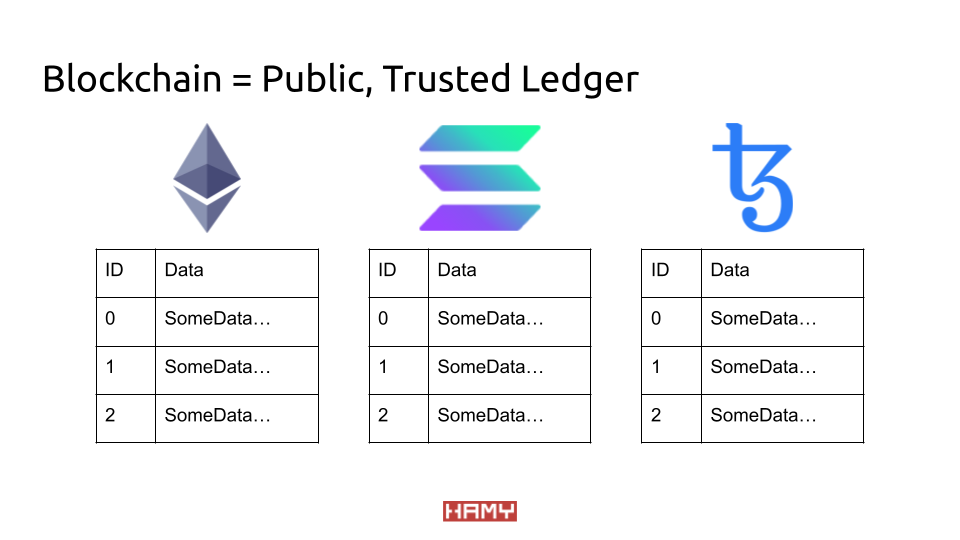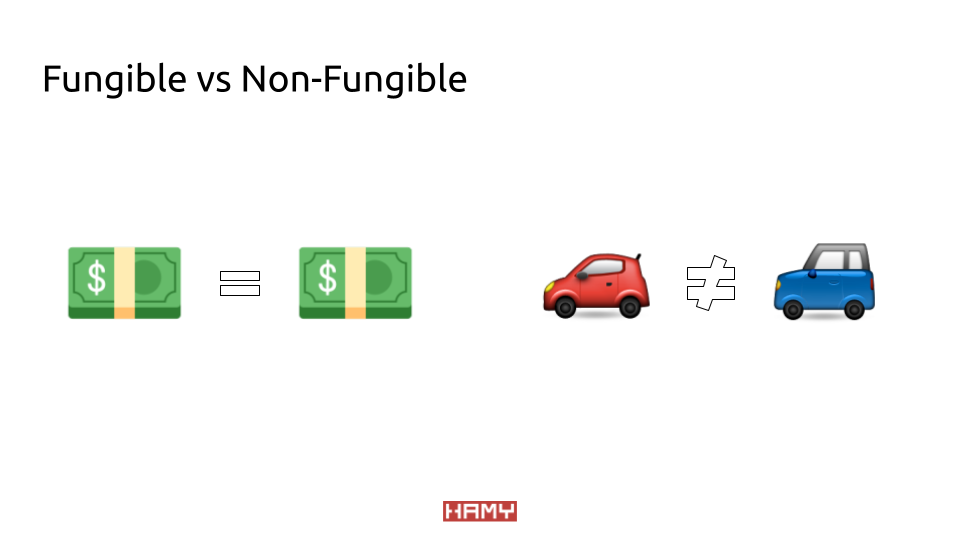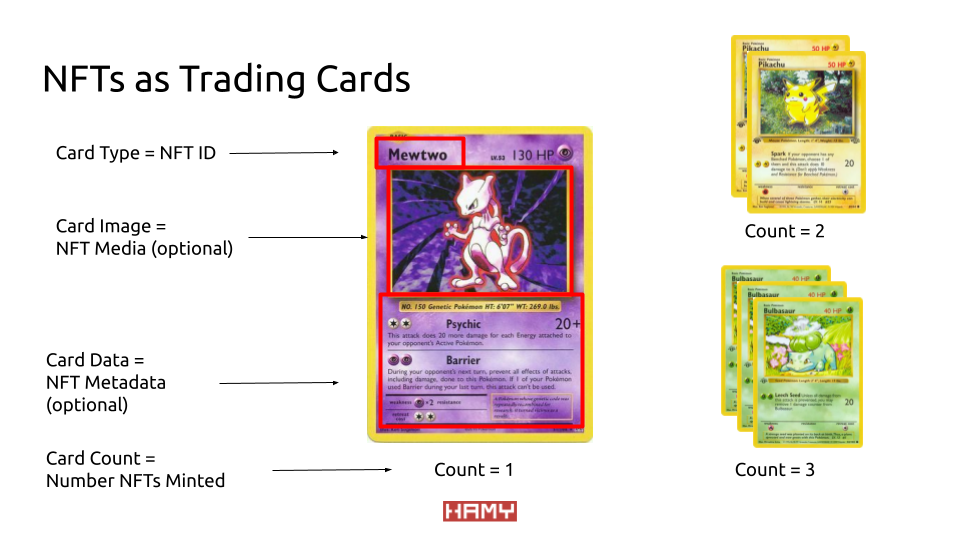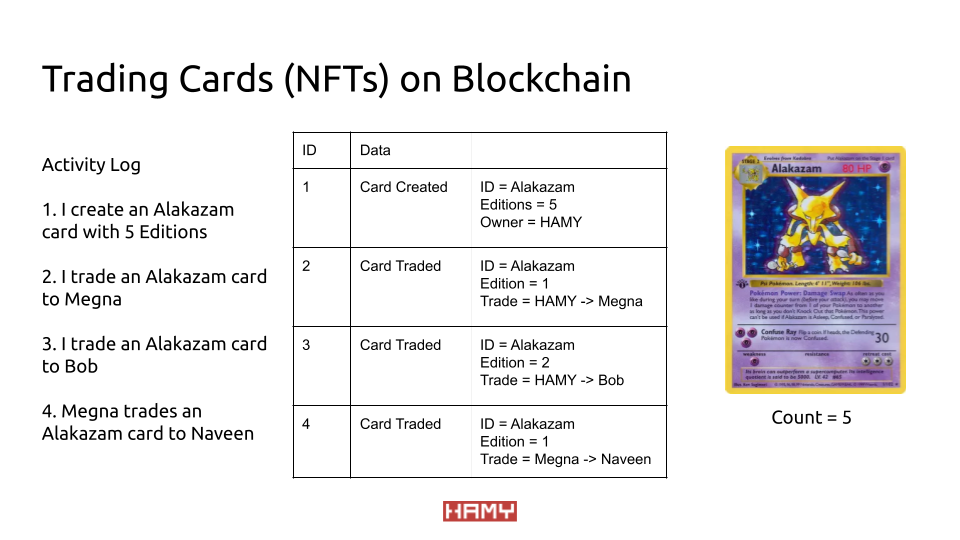Essay - Published: 2021.12.26 | blockchain | nft | technology |
DISCLOSURE: If you buy through affiliate links, I may earn a small commission. (disclosures)
NFTs are booming with marketplaces like Opensea moving billions of dollars in volume per year and celebs like Snoop Dogg, Tom Brady, and Grimes diving in. But what are NFTs and why are they moving so much money?
In this post I'm going to explain NFTs in a simple way so you can get on with your day.

Blockchains as ledgers
Before we can talk about NFTs, we must first get some shared context on what blockchain is. This is because NFTs exist on blockchain.
For our purposes it is sufficient to think of blockchain like a public, trusted ledger (ledger = list of records).
This means that at any point in time, anyone could start reading the ledger from the beginning to the end and understand everything that happened / all information available on the ledger.
In this metaphor, each blockchain would be its own ledger. This means each blockchain has its own set of records and methods of performing each of the above tasks.
Note: The implementation details behind how each blockchain performs the above tasks is out of scope for this post.

Fungible vs Non-Fungible
Continuing our public, trusted ledger metaphor, an NFT is just a special record on the ledger.
NFT = Non-Fungible Token
Simply this means that it's a unique element as opposed to a non-unique element.
Fungible - An example of a non-unique element might be a $1 bill. $1 = $1. You can swap dollars and effectively you still have the same thing - $1.
Non-Fungible - An example of a unique element (closer to what an NFT is) might be a car. Car1 != Car2. Even if you have 2 cars that are the same make and model, they will have different vin numbers, mileage, parts, repair histories, etc. If you swap Car1 for Car2 you will have a different car.

NFTs as Trading Cards
Let's try a metaphor for something we're already probably familiar with - trading cards.
Trading cards have a relatively simple formula:
NFTs are very much like this:
When a card (NFT) is created, it's logged on the blockchain. Some info that's stored:
When a card (NFT) is traded, it's logged on the blockchain.

Trading Cards on Blockchain
Let's look at an example of how card (NFT) creation and trading might work on blockchain.
card created - ID = 1, Editions = 5, Owner = HAMYcard traded - ID = 1, Edition = 1, Trade = HAMY -> Megnacard traded - ID = 1, Edition = 2, Trade = HAMY -> Bobcard traded - ID = 1, Edition = 1, Trade = Megna -> NaveenWe can see that the attributes of an NFT and the recording of activity on the blockchain allows anyone at any time to read the full ledger and understand the state of the world - what NFTs exist and who owns each one.
That's essentially how NFTs work.
NFTs are just a tool. One of their most compelling attributes is as a way to show ownership of some item.
In the traditional sense, proving ownership of something can be its own value. For instance, some rare Pokemon cards have sold for as much as $195k. NFTs offer a similar ability to prove authentic ownership of a unique item and then trade that ownership for money.
But some of the cool things about NFTs that traditional ownership models don't have is that:
This has unlocked some interesting use cases:
And more are coming out each and every day.
An example of something like this is if you wanted to give a prize to someone who has collected the first 151 Pokemon. Traditionally you'd need them to provide some sort of proof and then take time to authenticate their claims. In NFT land (assuming your Pokemon + ownership were on blockchain) you could just check the ledger and see if the person had the Pokemon or not.
Want to get started with NFTs? I recommend starting on Opensea - it's fast, reliable, and free! It's also where I create and sell my own NFTs.
Here's a walkthrough to get you started: Create your first NFT in 2 minutes
Still have questions? Liked the explanation? Comment below or reach out to me to let me know!
Yours in decentralization,
-HAMY.OUT
The best way to support my work is to like / comment / share for the algorithm and subscribe for future updates.